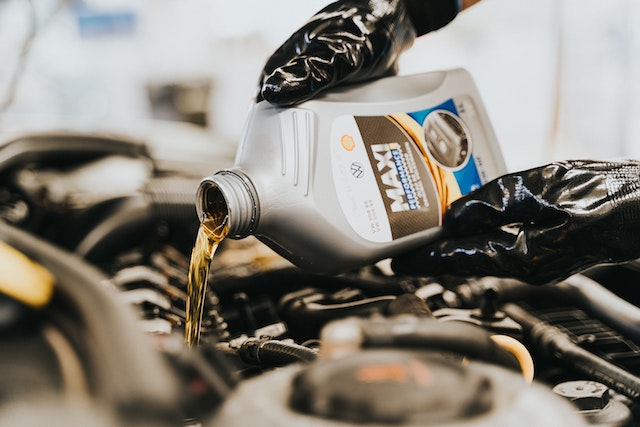What Are the 3 Types of Lubricants?
There are three different kinds of lubricants you can choose from. They are industrial, oil-based, grease, and synthetic polymer lubricants. All of these lubricants can be used on a wide variety of surfaces.
Contents
Industrial Lubricant
Industrial lubricants are essential for boosting the efficiency of machinery. They also reduce downtime and increase the productivity of the process. Oils help to control friction, corrosion, and oxidation. This can prolong the life of the equipment and decrease maintenance costs.
The best industrial lubricants should be formulated to last and protect against harsh environments. For example, they should be able to resist oxidation, extreme temperatures, dust, and shock loads.
Industrial lubricants are available in many types, including greases, synthetic lubricants, and oils. Different fats are better for specific applications, but choosing the right one is essential.
Choosing the proper industrial lubricant Richmond VA depends on the type of machine and the operational conditions. It is also essential to consider the equipment’s load, speed, and moisture.
Choosing the proper industrial lubricant is essential in maintaining and repairing your equipment. Using an oil that is incompatible with your equipment can lead to failure.
Manufacturers usually suggest a maintenance protocol in their user manuals. However, these protocols are not applicable in real-world situations. If you are still deciding what lubricant to choose, ask a specialist.
Often, manufacturers are changing tactics to keep up with the ever-changing world of manufacturing. A new advancement in lubrication can improve the reliability of your equipment, increasing its lifespan.
Industrial lubricants also control corrosion and help to reduce downtime. A well-maintained system can also reduce your total cost of ownership.
When choosing a lubricant, it is essential to understand the viscosity of the base oil. Base oils are made of mineral, vegetable, or synthetic hydrocarbons.
Oil-based Lubricants
Oil-based lubricants are made from a variety of oils. These oils can be petroleum, plant, or synthetic. While petroleum-based fats are known for their excellent lubricating properties, they also can cause harmful environmental effects. Several researchers have sought an alternative to petroleum-based lubricants.
Bio-lubricants are a renewable source of lubrication. They provide a more environmentally friendly alternative to petroleum-based lubricants and have lower friction losses. This type of lubricant is also biodegradable. Consequently, they reduce the environmental impact and emissions caused by petroleum-based fats.
Water-based lubricants (WBLs) are a promising solution. Many will offer excellent cooling capabilities and tribological performance. However, they are prone to corrosion and oxidation. Various challenges have impeded the development of new WBLs.
To reduce friction, creating a lubricant with a low contact angle and high thermal stability is crucial. Some additives have been investigated to enhance the tribological performance of water-based lubricants.
Grease Lubricants
Grease lubricants are used in a wide range of applications. They can be used in heavy equipment, marine applications, and automobiles. Selecting a grease depends on several factors. It’s essential to choose an oil that will keep your equipment operating correctly.
Grease lubricants are made of a variety of components. The most common features are base oil, thickener, and additives. All of these components have different effects on the lubricant’s performance.
The base oil is the foundation of every lubricant. It provides lubrication, protects parts from wear, and prevents metal-to-metal interactions. Mineral, synthetic, and vegetable oils are the main oils used in grease.
Additives are added to improve the functionality of grease. These components can be compounds used to thicken the oil, friction-reducing agents, and rust and corrosion inhibitors.
Synthetic Polymer Lubricants
Synthetic polymer lubricants are a group of lubricants made up of synthetic polymers. These are non-corrosive, environmentally friendly, and can be used to lubricate cables and other devices. They have been shown to reduce friction and make pulling cable easier.
Lubrication is essential for preventing wear and tear and avoiding pain, inflammation, and damage. It is necessary to understand how lubrication works and how to improve its effectiveness. This will also provide a foundation for future developments in biomaterial-based solutions.
Synthetic polymer lubricants can be biomimetic in their composition and structure. Often, they mimic the structure and properties of joint fats in the human body. They can be used in applications that include encapsulated implants and spinal implant devices with bearing surfaces.
Polyvinyl alcohol (PVA) is a good lubricant. Its solubility depends on the degree of hydrolysis in water.
Penetrating Lubricants
Penetrating lubricants are specialized lubricants designed to provide temporary lubrication in areas where general lubricants cannot reach. These types of lubricants have additives to help their longevity.
Penetrating lubricants are often used to free stuck fasteners or rusted metal parts. They are also used as solvents and cleaning agents. In addition, they can be used to remove adhesives, grease, and tar.
The critical feature of penetrating lubricants is their high penetration. This allows them to reach into tight spaces between threads. As a result, they can pierce the pores of metal parts to free them. Besides their ability to penetrate, penetrating lubricants can break up rust and protect against corrosion.
Penetrating oils are made from various compounds. Typically, these compounds contain hydrocarbons, naphtha, corrosion, and a petroleum-based solvent. Some manufacturers add antioxidants to their products as well.

